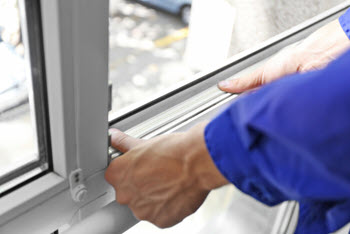How To Manage Dry Air In Your Home
 Winter brings dry air for one simple reason: when the temperature is low, the humidity level is also low. There is significantly less moisture in the air since cool air cannot hold enough moisture or water. Warm air simply holds more moisture compared to cool air. However, simply increasing the temperature inside the home does not increase moisture. The air will be warm but it will remain dry. There are other factors that are at play.
Winter brings dry air for one simple reason: when the temperature is low, the humidity level is also low. There is significantly less moisture in the air since cool air cannot hold enough moisture or water. Warm air simply holds more moisture compared to cool air. However, simply increasing the temperature inside the home does not increase moisture. The air will be warm but it will remain dry. There are other factors that are at play.
The Trouble With Dry Indoor Air
Contents
Dry air leads to a number of problems, including itchy and cracked skin. Also, dry air causes dry noses and throats. Upper respiratory diseases and conditions may also worsen during winter due to the environment. This has something to do with how the body functions. The nose, throat, and nasal passageways contain moist membranes that help filter dust, dirt, and microorganisms to prevent them from reaching the lungs. When these membranes become dry, they become less effective in capturing particles, which leads to problems such as itchy throats, colds, and cough.
Dry skin as a result of dry air may seem like a minor problem but without proper management, this condition could worsen. Dryness can lead to cracks that open the skin and make it more vulnerable to infections. Cracked and chapped skin may also be painful and embarrassing for some, particularly if the area is visible to other people.
Very dry air can also cause static electricity. This is the phenomenon that causes fabrics to stick together. While this in itself is harmless, static electricity can cause mild but painful shocks each time the skin touches a metal surface.
Dry air can also cause damage to the home and property, particularly structures made of wood such as walls, ceilings, floors, and furniture. Paper can also be affected, causing books, notebooks, artwork, sculpture, and the like to become warped and brittle.
Making Dry Air Work For You
The best way to manage dry air is to prevent it. Here are ways how:
1. Fix Any Air Leaks In The House
 Cracks and warps in windows, doors, and joints can allow cold air to seep in. This causes the temperature indoors to decrease and forces the heating system to work harder. Before the winter months, perform a basic inspection of the house to identify problem areas. Install insulation solutions where necessary to prevent heat loss.
Cracks and warps in windows, doors, and joints can allow cold air to seep in. This causes the temperature indoors to decrease and forces the heating system to work harder. Before the winter months, perform a basic inspection of the house to identify problem areas. Install insulation solutions where necessary to prevent heat loss.
2. Understand How Humidity Works Indoors
Basically, the lower the temperature is outdoors, the lower the level of moisture that the air indoors can hold. In general, the ideal humidity level indoors should be around 45%. If it goes over 50%, it is too high; if it goes below 30%, then it is too dry. A humidity meter or hygrometer can be useful for this purpose. In the absence of one, it may be necessary to watch out for common signs of humidity extremes. Here’s how.
When windows begin to fog or condensation appears on glass panes, walls or ceilings, there may be too much humidity. If, on the other hand, there is an increase in static electricity and wooden structures begin to crack or warp, humidity levels may be too low.
3. Control Dry Air At Home
 The best solution to improving indoor air quality is to increase humidity indoors during winter. There are several ways to do this. First, grow indoor plants. Water them as required and spray the leaves for added moisture. Plants excrete moisture which evaporates in the air. This process, in turn, increases humidity indoors.
The best solution to improving indoor air quality is to increase humidity indoors during winter. There are several ways to do this. First, grow indoor plants. Water them as required and spray the leaves for added moisture. Plants excrete moisture which evaporates in the air. This process, in turn, increases humidity indoors.
Next, fill a bowl with water and place it close to a heat source. Heat increases the rate of water evaporation, hence increasing the amount of moisture in the air. Drying clothes indoors on a drying rack can also help reduce dryness in the air. Also, you can keep the bathroom door slightly open during a shower. The steam can maintain humidity levels at a comfortable level.
Keep in mind, however, that these are solutions that work only in small areas. For a more effective option, consider investing in a whole house humidifier. It solves the problem of keeping humidity levels even in every room in the house without resorting to different tactics. A whole-house humidifier works with the HVAC system to deliver moisture throughout the house, hence preventing air dryness. It can be programmed to ensure that the moisture in the air is regulated so comfort is delivered when and where it is needed most.
Conclusion
Lawes Company is a trusted HVAC company that offers affordable heating and cooling system services. We have NATE certified technicians on staff who can do an excellent job for you.
At Lawes Company, we offer top class HVAC repairs, installations, tune-ups, and replacements. Our experts have the skills and expertise to provide you with practical and affordable HVAC solutions.
Get in touch with us today, and we will be happy to serve you. We offer free, in-home estimates. Click here to contact us now or call us at (732) 741-6300 to find out more!
